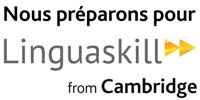GOOD PRACTICES : Lesson plans and points to consider

Lesson plans and points to consider
1. What is the main topic of the lesson? If the activities in the lesson have a logical link, then the learners will be able to follow you and the lesson, more easily.
2. How can I arouse their interest? Begin the lesson by involving the children straight away. Show them a picture, photo, or object to capture their attention and indicate which topic the lesson is based on.
3. How can I challenge them? Every learner, whatever their age or level needs to be challenged. If there’s no challenge, then there’s no learning. If there’s no learning, there’s no motivation. Think about what they already know and make sure your lesson isn’t just teaching them the same thing.
4. How much should I review what they’ve already done? Having said you should challenge them, you can and should review previous words and work in general. Teaching a word one lesson doesn’t mean that all the learners have learnt it for the next. Incorporate previously taught language in new situations to give the learners more practice.
5. What are the objectives of the lesson? It’s vital to always think about ‘why’ they are doing an activity, game, or song. Everything on your plan should be educational. If you don’t know what an activity is teaching the learners, then take it off your plan.
6. What vocabulary do I want to teach them? If you prepare beforehand exactly what words you are going to concentrate on and how you are going to present them, you will be better equipped to explain them clearly to the children.
7. How can I explain the activities? You should prepare, at least mentally, how you are going to explain each activity. Explanations should be short, clear, and visual. Don’t forget to demonstrate and check their understanding by getting one or two of them to demonstrate for you. Also decide how you are going to write on the board. You can draw a diagram on your plan to remind you so that it’s clearer for the learners.
8. How much detail do I need on my plan? If you’re working from a book, then don’t forget page numbers. As a guideline, imagine that someone else must cover your class. They should be able to read your plan and teach your lesson.
9. What order should I teach the activities in? As a very general rule you can start with an introduction to the lesson, introduce the new language, give the children some controlled practice and move onto freer practice. Finally review what they’ve done and get feedback from the children themselves about what they did.
10. What problems might I have? If you’re not sure if an activity will work; if you think it’s too hard or too long then take time before the lesson, at the planning stage, to think about how to resolve any problems that could arise. Problems could be activity related or timetable related, student related or even teacher related. Taking those extra minutes when planning to think about possible solutions could avoid you having a disastrous lesson.
EXTRA TIPS
• Have a lesson plan template that you can just fill in and print off.
• Always have your plan handy during the lesson.
• Tick the activities that worked well as you do them.
• Make any extra comments at the end of the lesson about what worked and what didn’t to help you plan your next lesson.
• Plan a series of lessons that are linked to the same theme to have coherence to your lessons.
• Have extra activities ready just in case they finish early. This can be for both mid-lesson for quick finishers or at the end of the lesson if your plan is shorter than you imagined.
• Remember to allow time for preparation, action and reviewing.
• An example of controlled practice is when you provide sentences with missing words. The learners need to fill in the gap to talk to their partner and in this way, everyone produces similar language. Freer practice is when you set up the situation, for example meeting someone new, and you let the children decide on their own role-play language using what they know and what they have recently learnt. You will probably do more ‘freer practice’ with older primary learners than the younger ones who have limited language at their disposal.
CHECKLIST OF WHAT TO INCLUDE
• Materials
• Objectives
• Procedures
• Estimated time for each activity
• Explanations
• Board work
• Page numbers (if working from a textbook)
• Extra activities
• Follow-on activities
• Lesson evaluation – what you would do differently next time or what went well?
Source: British Council Author: Jo Bertrand


